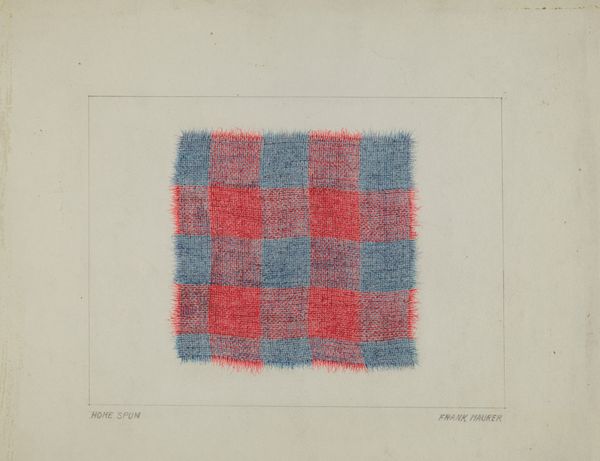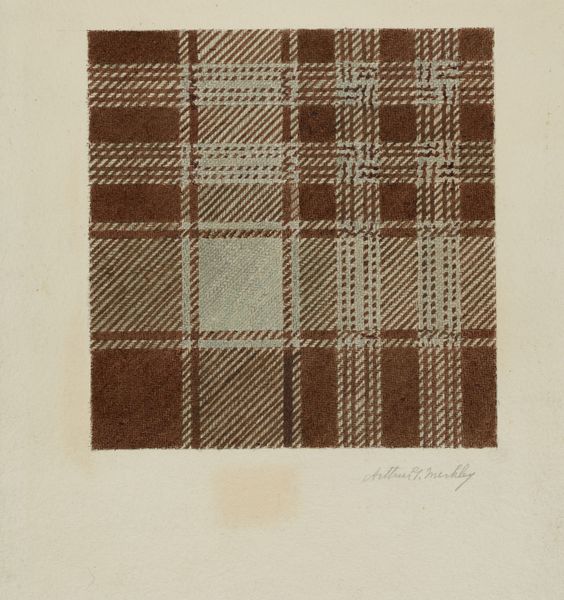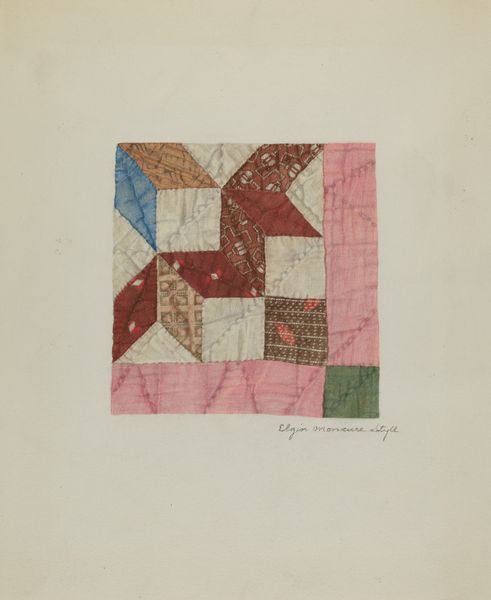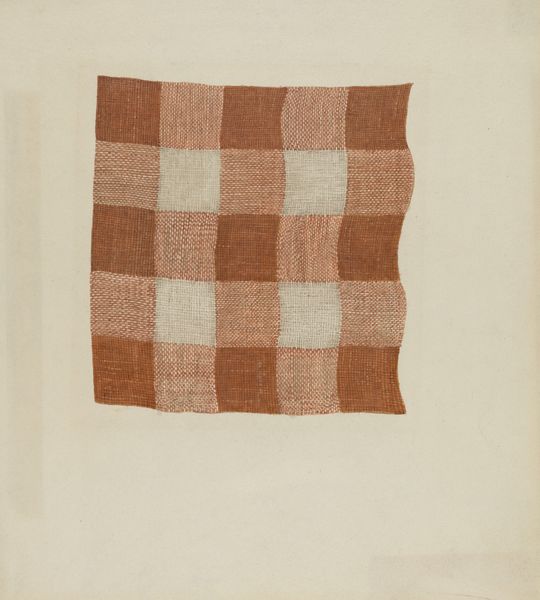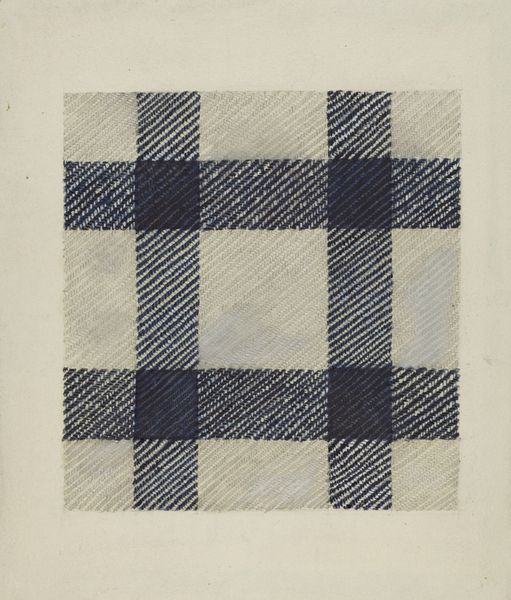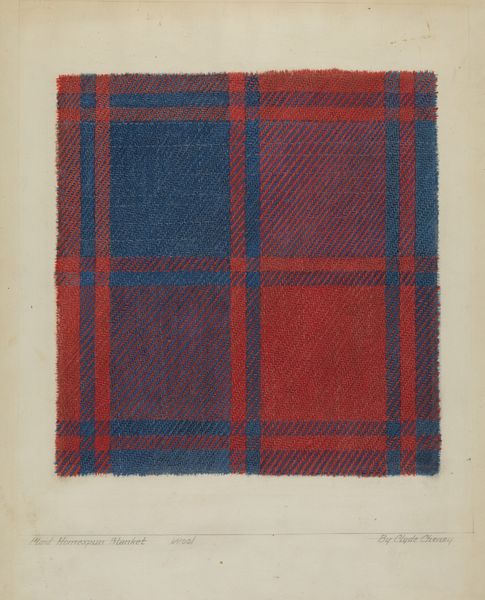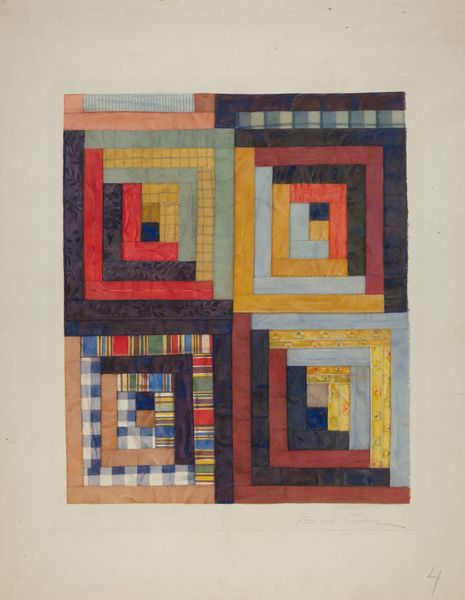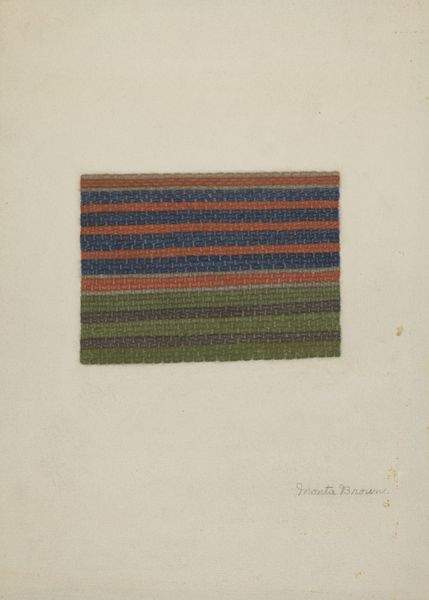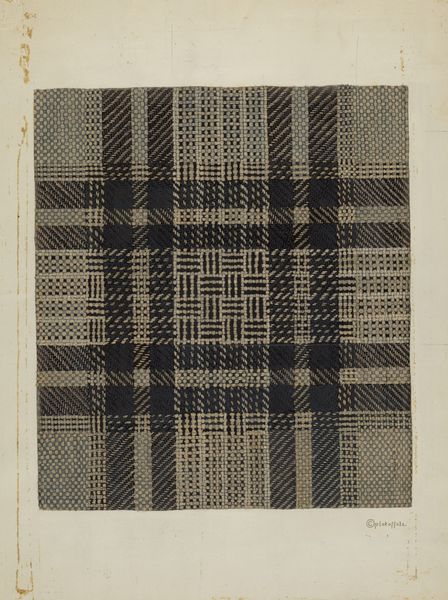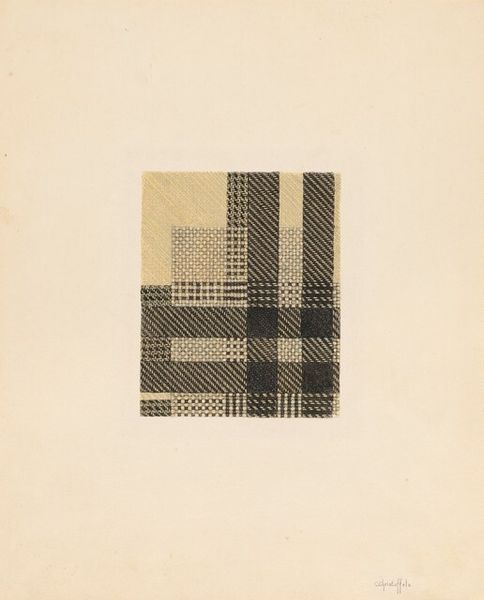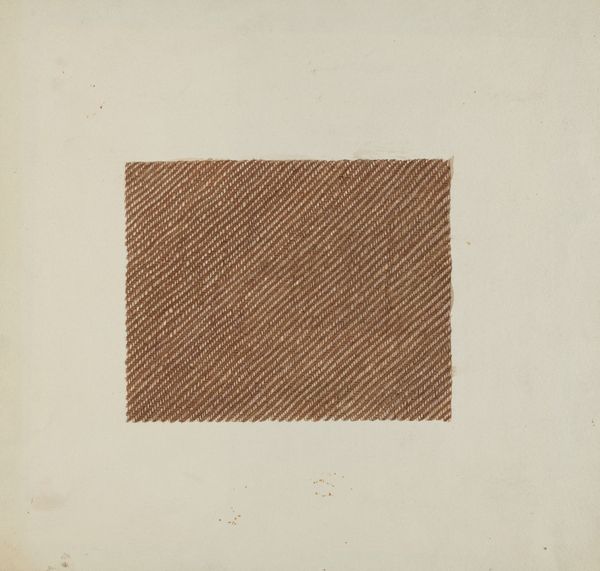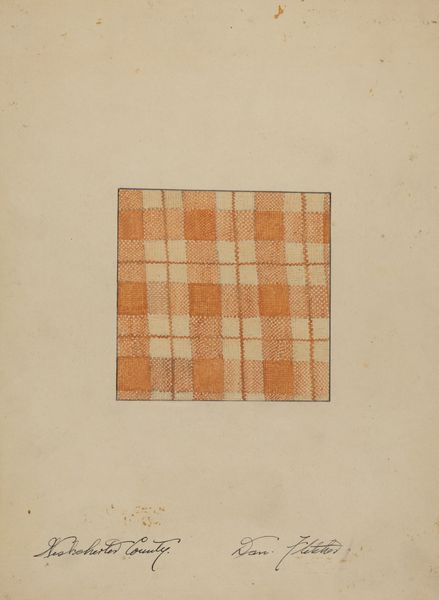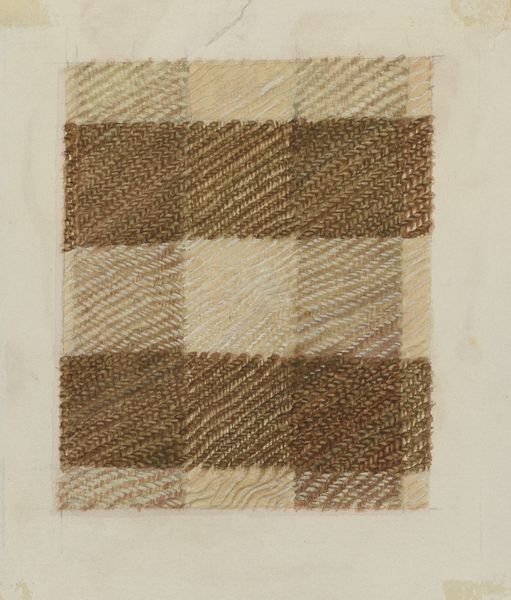
drawing, paper, watercolor
#
drawing
#
water colours
#
pattern
#
paper
#
abstract
#
watercolor
#
geometric
#
watercolor
Dimensions: overall: 30.8 x 22.7 cm (12 1/8 x 8 15/16 in.)
Copyright: National Gallery of Art: CC0 1.0
Editor: This is Arthur G. Merkley’s "Plaid Woolen Blanket" from around 1938, rendered with watercolors on paper. It's a study of a square swatch of fabric, I guess. I am immediately struck by the artist’s close attention to capturing the texture of the fabric. What do you see in this piece, considering the historical context of its production? Curator: Well, for me, it speaks volumes about the means of artistic creation. Here's a piece deeply entrenched in materiality, right? Merkley, rather than simply representing the blanket, dissects its very composition using watercolor— a traditionally "high art" medium — to depict what is essentially a common textile. Consider the labor involved, both in the weaving of an actual blanket in the late 30's and the artist laboring to depict it with such exactitude. Does this challenge your preconceived notions about the hierarchies between craft and fine art? Editor: It does, actually. I hadn’t thought about the labor aspect of it. Does the fact that he chose watercolor on paper impact this challenge at all, perhaps implying some sort of material deficiency, or the constraints imposed on working class artists? Curator: Precisely! Watercolors are relatively inexpensive and portable compared to oils, which would necessitate more sophisticated means of production and possibly greater social status on behalf of the artist. Merkley's choice illuminates those financial limitations faced by artists and the ways they creatively work within them, thus elevating a craft-based subject through accessible material. And think about what kind of paper the watercolor is applied to – its age, and origin as a source of cellulose, all become factors. Do you start to consider art a social practice rather than purely an act of individual creativity? Editor: Yes, that makes sense. I didn't consider how the work and materials themselves embed so many different facets of that era. Thanks for expanding my perspective! Curator: Of course! These considerations broaden our perception of art. Remember to question, and always look beyond what meets the eye, focusing also on material composition!
Comments
No comments
Be the first to comment and join the conversation on the ultimate creative platform.
